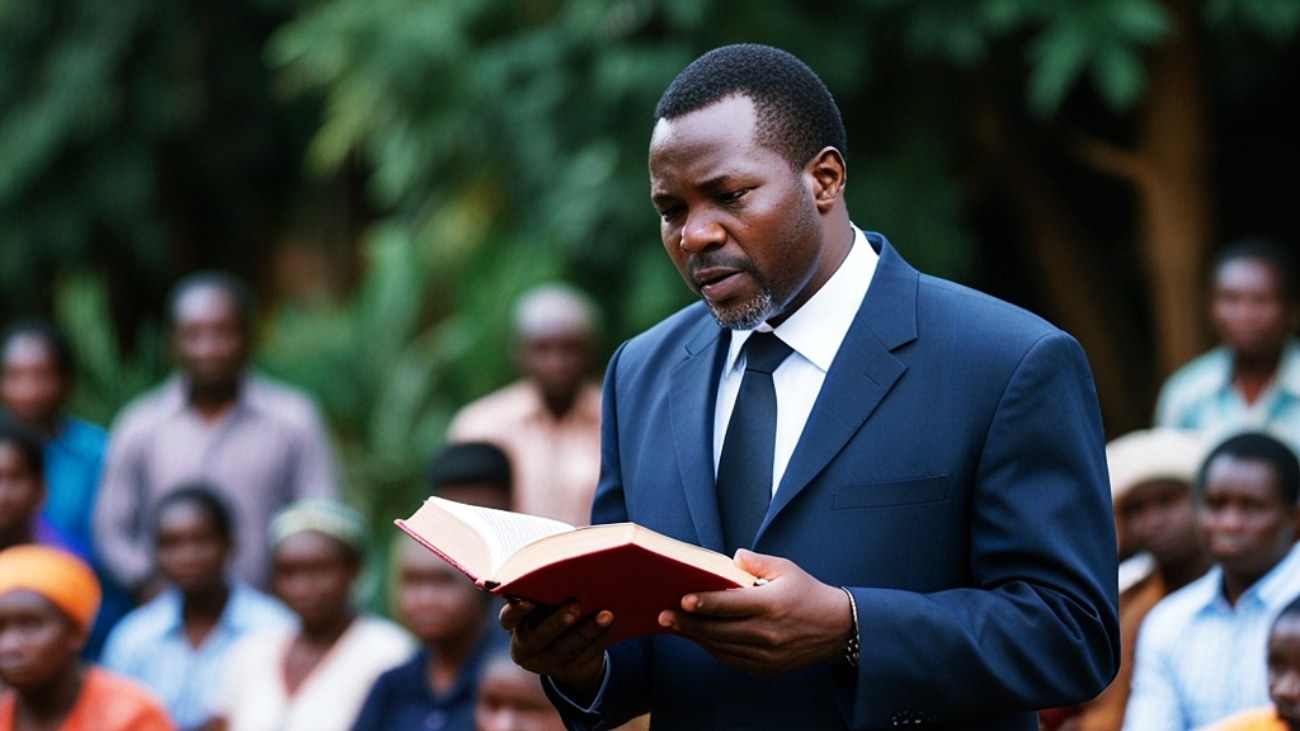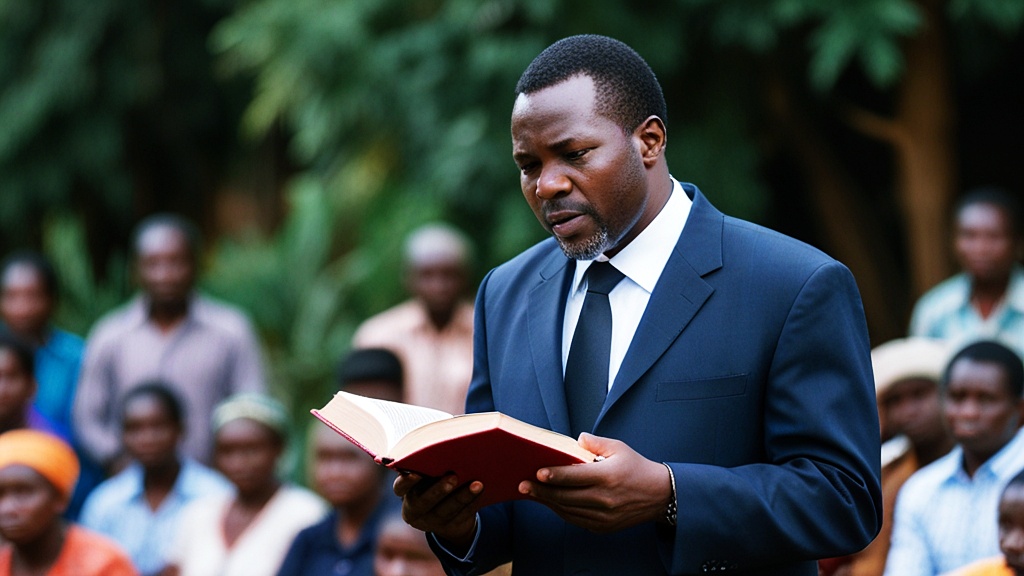Why You MUST NOT Tithe!
“For we hold that one is justified by faith apart from works of the law” – Romans 3:28 (ESV)

The letter to the Galatians, authored by the Apostle Paul, is one of the most powerful treatises in the New Testament that addresses the nature of the Gospel and the role of the Mosaic Law. Written to the churches in Galatia, a region in modern-day Turkey, the letter was penned in response to a crisis: certain individuals were teaching the Galatians that in addition to believing in Christ, they needed to observe the Jewish law, particularly circumcision, to be truly saved.
Paul’s letter to the Galatians is a passionate defence of the Gospel of grace and a stern rebuke to those who would turn believers away from it. He emphasizes that salvation is by faith alone in Jesus Christ and not by the works of the Law. This epistle remains crucial in understanding the relationship between the Law and the Gospel and the sufficiency of Christ’s atoning work.
Tithing: A Threat to True Faith
This week we shall observe that those who practice tithing as a means to secure God’s favour or blessings are not living in true faith in Christ. Such individuals are, in essence, cut off from the eternal life that comes through faith in Jesus. By examining Paul’s arguments in the letter to the Galatians, we will see that tithing, as it is practiced today, is incompatible with the Gospel of grace and leads believers away from the true path of salvation.
The Meaning of “Grace” in Galatians
The word “grace” (Greek: charis) is central to Paul’s message in Galatians. Etymologically, charis refers to a gift or favour, one that is given freely without any expectation of return. In the context of Paul’s writings, grace refers to the unmerited favour of God, particularly as it relates to salvation. Paul uses this term to contrast the free gift of salvation through faith in Christ with the works-based approach of the Mosaic Law. For example, in Galatians 2:21, Paul asserts, “I do not set aside the grace of God, for if righteousness could be gained through the law, Christ died for nothing!” Here, grace is juxtaposed with the idea of earning righteousness through the Law, stressing that salvation is a gift, not a reward for human effort.
The Law of Tithing: Earning God’s Favour
The Law of Tithing, as presented in the Old Testament, demands that believers secure God’s favour and blessings through the giving of a tenth of their income. Key verses that support this practice include Leviticus 27:30, Malachi 3:10, and Deuteronomy 14:22-23. However, this concept goes against the Gospel of Jesus Christ, which teaches that God’s favour is not something that can be earned through financial contributions but is a free gift given through faith. As Paul expresses in Galatians 1:6 (NIV), tithers are “abandoning the grace of Christ” for a favour that is merited through the payment of tithes. Paul says that this exchange of grace for works is a dangerous departure from the true Gospel.
Tithing as a Means to Evade God’s Curse
Many today tithe out of fear of being cursed, as indicated in Malachi 3:9. They seek to evade God’s curse by adhering to this Old Testament command. However, this practice directly contradicts the Gospel of Jesus Christ, which declares that Christ has delivered us from the curse of the Law. In Galatians 3:13-14, Paul writes, “Christ redeemed us from the curse of the law by becoming a curse for us… He redeemed us in order that the blessing given to Abraham might come to the Gentiles through Christ Jesus, so that by faith we might receive the promise of the Spirit.” Tithing, therefore, is not only unnecessary but actually a denial of the sufficiency of Christ’s sacrifice.
The Example of Simon the Sorcerer
The story of Simon the Sorcerer in Acts 8:9–24 serves as a powerful illustration of the dangers of attempting to buy God’s favour with money. Simon, a man who had previously practiced sorcery, offered money to the Apostles in exchange for the power to impart the Holy Spirit. Peter’s response to Simon’s request—”May your money perish with you, because you thought you could buy the gift of God with money!” (Acts 8:20)—reveals the unregenerate nature of those who seek to procure God’s favour through monetary means. This belief is rampant in churches today, where the giving of tithes and offerings is linked to receiving blessings. Such practices expose a lack of true faith in the sufficiency of Christ’s work.
The Implication of Tithing
Paul’s statement in Galatians 2:21, “I do not set aside the grace of God, for if righteousness could be gained through the law, Christ died for nothing!” is a direct challenge to those who tithe as a means of gaining favour with God. By relying on tithing, they are effectively setting aside God’s grace, which is the only means of salvation. If righteousness and blessings could be obtained through tithing, then Christ’s sacrifice would be rendered meaningless. Therefore, those who tithe are rejecting the grace of God and cannot be saved.
Justification by Faith Alone
In Galatians 3:7-9, Paul emphasizes that it is faith in Christ’s atonement on the cross alone that justifies us before God without the addition of works such as tithing. “Understand, then, that those who have faith are children of Abraham. Scripture foresaw that God would justify the Gentiles by faith, and announced the gospel in advance to Abraham: ‘All nations will be blessed through you.‘ So those who rely on faith are blessed along with Abraham, the man of faith.” This passage makes it clear that our justification comes solely through faith, not through any act of tithing or other works.
The Curse of Tithing
Ironically, the curse that tithers seek to avoid actually comes upon them when they do tithe. In Galatians 3:10, Paul warns, “For all who rely on the works of the law are under a curse, as it is written: ‘Cursed is everyone who does not continue to do everything written in the Book of the Law.'” Those who practice tithing as a means of securing God’s favour are relying on the Law and are therefore under the very curse they seek to escape. Galatians 3:13-14 makes it clear that our deliverance from the curse of Malachi 3:8 and other curses of the Mosaic Law is based on what Christ did for us on the cross. Paul further explains in Romans 9:3 that being under a curse is equivalent to being cut off from the salvation that comes through Jesus Christ. In Romans 11:20–23, Paul elaborates that the unbelief demonstrated by those who persist in tithing is what confirms them as unbelievers in Christ, rendering them ineligible for salvation.
Tithing as Falling from Grace
Paul uses the concept of circumcision to refer to an individual’s adherence to the law as a way of earning God’s favour through works. In Jewish custom, circumcision was a physical sign of one’s submission to the Law, symbolizing an attempt to earn righteousness by following its regulations. This practice was rooted in the covenant God made with Abraham, where He commanded, “Every male among you shall be circumcised. You are to undergo circumcision, and it will be the sign of the covenant between me and you” (Genesis 17:10-11).
In Galatians 5:2-4, Paul uses circumcision to signify adherence to the Law of Moses, emphasizing that all who choose to earn God’s favour through works of the Law, such as tithing, are actually submitting to the entire Law of Moses. Paul warns that Christ is of no value to those who submit to the Law, declaring that they have “fallen from grace.” By tithing, believers are submitting to the Law and falling from grace, rendering Christ’s sacrifice of no value to them.
Tithing: A Weak and Miserable Force
Galatians 4:9 refers to the Law as a “weak and miserable force,” a description that applies equally to the practice of tithing. The deficiencies of tithing are numerous: it places a burden on believers, it fosters a false transactional relationship with God, and it distracts from the true Gospel of grace. Tithing is incapable of saving or blessing anyone; it is a shadow of the Old Covenant that has been fulfilled in Christ.
The Works of the Flesh: A Result of the Law
Paul’s exhortation in Galatians 5:16–26 is crucial in understanding the implications of relying on the Law for salvation. He contrasts the works of the flesh with the fruit of the Spirit, illustrating that those who rely on the Law are cut off from the grace of Jesus Christ, which brings true transformation. The moral decay and rampant sin in many churches today can be traced back to this false teaching that God’s favour can be procured through financial contributions. This teaching undermines the true Gospel of Jesus Christ and leads to spiritual stagnation rather than growth.
The Motives of Pastors who Promote Tithing: Galatians 6:12-13
In Galatians 6:12-13, Paul reveals the true motives of pastors who promote tithing:
- They seek to impress people by building huge churches and living lavishly.
Many pastors who promote tithing aim to impress people by constructing enormous, elaborate church buildings and living opulent lifestyles. This approach appeals to the congregation’s desire for visible success and prosperity, creating a false image of God’s favour and blessing. These leaders use the funds collected from tithes to support their personal luxury, including expensive homes, cars, and other material possessions. This pursuit of grandeur and wealth is contrary to the humble and selfless example set by Jesus Christ. Instead of fostering genuine spiritual growth and community service, the practice of tithing prioritizes outward appearances and material wealth, misleading believers into equating financial prosperity with spiritual approval. This focus on external success eliminates the core message of the Gospel, which emphasizes true character transformation, faith, and reliance on God’s grace rather than worldly riches.
- They want to avoid unpopularity by preaching what the people want to hear:
Pastors promote tithing to avoid unpopularity by preaching messages that cater to their congregation’s desires rather than adhering to the true Gospel. In a culture increasingly driven by materialism and instant gratification, the promise of financial blessings in exchange for monetary offerings to God is an appealing message. By assuring congregants that their financial contributions will lead to God’s favour and prosperity, these pastors sidestep the more challenging and unpopular aspects of the Gospel that call for repentance, self-denial, and a focus on eternal rather than earthly treasures. This approach not only fills pews and offering plates but also shields the leaders from criticism, as they tell people what they want to hear: that their path to success and God’s favour lies in their financial generosity rather than in their faith and obedience to Christ.
- They seek to grow their following so they may boast of how committed their followers are to them and their ministries.
Proponents of tithing are driven by a desire to grow their following using the financial contributions of their congregants as a metric of their success and influence. This focus on numerical growth and monetary gain leads to a form of spiritual boasting, where leaders take pride in the size and financial commitment of their congregation rather than in genuine spiritual transformation. Such leaders emphasize tithing and financial giving as evidence of faith and commitment, creating a culture where the value of a believer is measured by their financial contributions. This not only distorts the true essence of the Gospel but also creates a superficial and transactional approach to faith where the emphasis is placed on outward displays of piety and support for the ministry rather than on the inward renewal and faith in Christ that Paul emphasizes in Galatians 5:22–26. By boasting about the financial sacrifices of their followers, these leaders shift the focus from Christ’s work to their own achievements, undermining the message of grace and the transformative power of the Gospel.
The True Measure of Salvation: Galatians 6:15
Paul closes his letter by pointing out what truly matters: transformation through faith in Christ. Galatians 6:15 states, “Neither circumcision nor uncircumcision means anything; what counts is the new creation.” Faith in Christ has nothing to do with how much money we give to churches or the status and following afforded by our material wealth. What matters is whether we have been delivered from our sinful, carnal nature. Without this transformation, we cannot legitimately claim to be born again.
Conclusion
The practice of tithing as a means of securing God’s favour or blessings is fundamentally opposed to the Gospel of grace. It is a return to the Law, a denial of the sufficiency of Christ’s sacrifice, and a path that leads away from true faith and salvation. True believers in Christ rely solely on His grace, not on their own works, to secure their standing before God.








